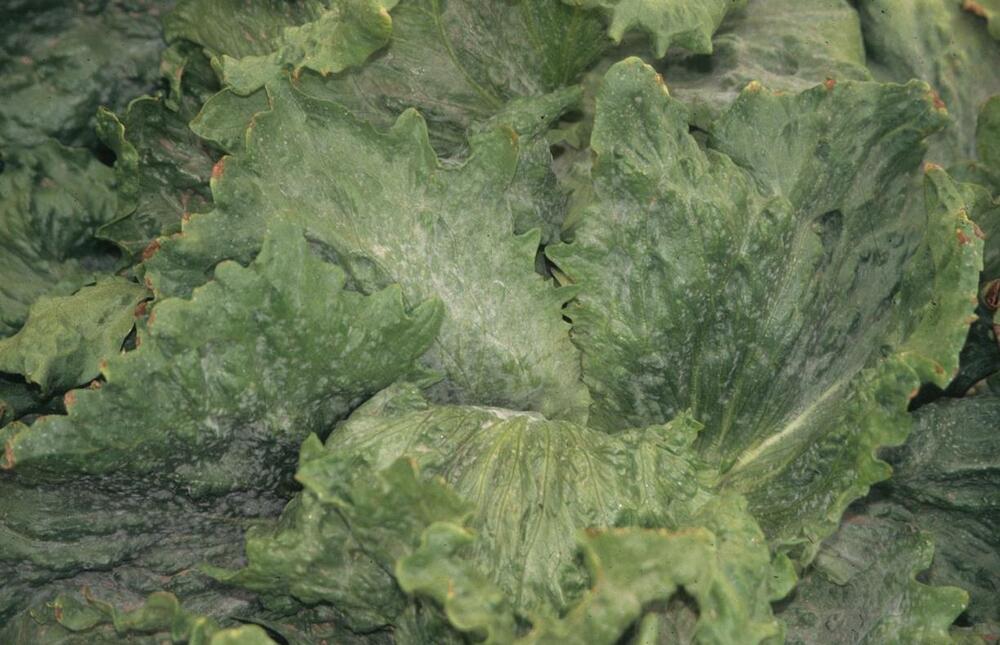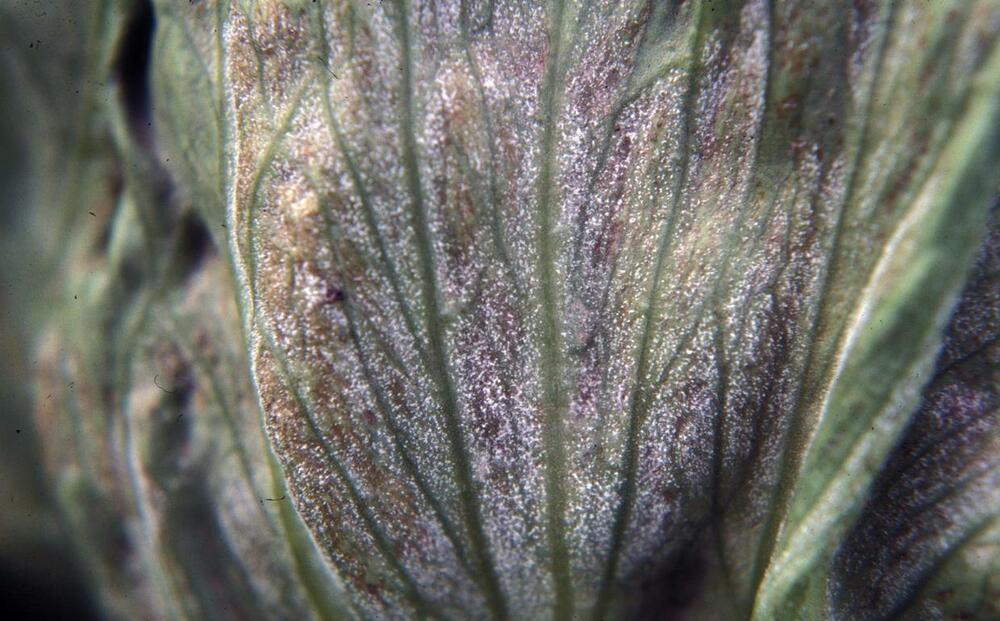Lettuce
Description
Uses
Propagation
References
Common Pests and Diseases
Diseases
Category : Fungal
Anthracnose (Shot-hole) Microdochium panattonianum
Symptoms
Small water-soaked tan spots on outer leaves which may expand and turn straw colored; centers fall out of mature lesions giving plant a shot-hole appearance
Cause
Fungus
Comments
Fungus survives in crop debris in soil; disease spread by splashing water
Management
Rotate crops; plow crop debris into soil; control wold lettuce populations around plantation; avoid overhead irrigation
Leaf drop (Sclerotinia drop)
Sclerotinia minor
Sclerotininia sclerotiorum
Symptoms
Wilting of outside leaves which spreads inwards until whole plant is affected; soft watery lesions on leaves; leaves collapse and lie on soil surface; black fungal structures on infected leaf tissue and soil surface
Cause
Fungi
Comments
Fungi can survive in soil for 8-10 years
Management
Disease significantly reduced by application of fungicides immediately after thinning plants; plow soil deeply; rotate crops with non-hostsPowdery mildew Erysiphe cichoracearum
Symptoms
White, powdery fungal growth on the top and underside of older leaves; leaves turning yellow or brown; small black fruiting bodies may be visible
Cause
Fungus
Comments
Disease emergence favors humid weather conditions; disease can be spread over long distance by wind movements
Management
Disease can be controlled by application of sulfur at first sign of symptoms, as long as temperatures are high enoughSeptoria leaf spot Septoria lactucae
Symptoms
Small, irregularly shaped chlorotic spots on oldest plant leaves which enlarge and turn brown and dry out; lesiuons may fall out of leaves creating holes; leaf spots may have chlorotic halos; if plant is severely infected, lesions may coalesce forming large necrotic patches, wilting leaves and plant death
Cause
Fungus
Comments
Fungus survives in infected seed and in crop debris; disease spreads in humid or wet conditions; can be spread by splashing water; wild lettuce is an important overwintering site for the fungus
Management
Plant pathogen free seed; plant in areas where Septoria is uncommon; ideal planting sites are in regions with low rainfall; hot water treatment of seeds prior to planting may help reduce levels of diseaseCategory : Viral
Big vein Mirafiori lettuce big-vein virus (MiLBVV)
Symptoms
Veins enlarged and clear; puckered or ruffled leaves; upright outer leaves
Cause
Virus
Comments
Virus is soil-borne and is introduced to plants via the fungus Olpidium brassicae; disease more prevalent during cool weather
Management
Planting resistant varieties is the best method to control MiLBVVCategory : Other
Slugs & snails (Gray garden slug, Spotted garden slug, Brown garden snail, European garden snail , etc.)
Decoratus reticulatum
Limax maximus
Helix aspersa
Cornu aspersum
Symptoms
Irregularly shaped holes in leaves and stems; flowers and fruit may also be damaged if present; if infestation is severe, leaves may be shredded; slime trails present on rocks, walkways, soil and plant foliage; several slug and snail species are common garden pests; slugs are dark gray to black in color and can range in size from 2.5 to 10 cm (1-4 in); garden snails are generally smaller and possess a rounded or spiral shell
Cause
Mollusc
Comments
Slugs and snails prefer moist, shaded habitats and will shelter in weeds or organic trash; adults may deposit eggs in the soil throughout the season; damage to plants can be extensive
Management
Practice good garden sanitation by removing garden trash, weeds and plant debris to promote good air circulation and reduce moist habitat for slugs and snails; handpick slugs at night to decrease population; spread wood ashes or eggshells around plants; attract molluscs by leaving out organic matter such as lettuce or grapefruit skins, destroy any found feeding on lure; sink shallow dishes filled with beer into the soil to attract and drown the molluscs; chemical controls include ferrous phosphate for organic gardens and metaldehyde (e.g. Buggeta) and carbaryl (e.g Sevin bait) for non-organic growersPests
Category : Others
Bottom rot Rhizoctonia solani
Symptoms
Small red to brown spots on lower leaves, usually on underside of midrib which may expand rapidly causing the leaves to rot; amber colored liquid may ooze from leaf lesions; as stems rot, head of lettuce becomes slimy and brown and collapse; a tan or brown mycelial growth may be visible in infected tissue
Cause
Fungus
Comments
Fungus survives on crop debris in soil; disease emergence favored by warm, wet weather
Management
Disease is most effectively managed by combining cultural control with fungicide application; plow soil before planting; rotate crops regularly; avoid irrigation close to harvest; plant varieties with an erect growth habit to reduce leaf contact with soil; apply appropriate foliar fungicidesDowny mildew Bremia lactucae
Symptoms
Light green or chlorotic angular lesions on topside of leaves which turn yellow; fluffy white growth on underside of leaves
Cause
Fungus
Comments
Disease favors cool, moist conditions; can be spread via infected seed; fungus survives in plant debris and in wild lettuce plants



















